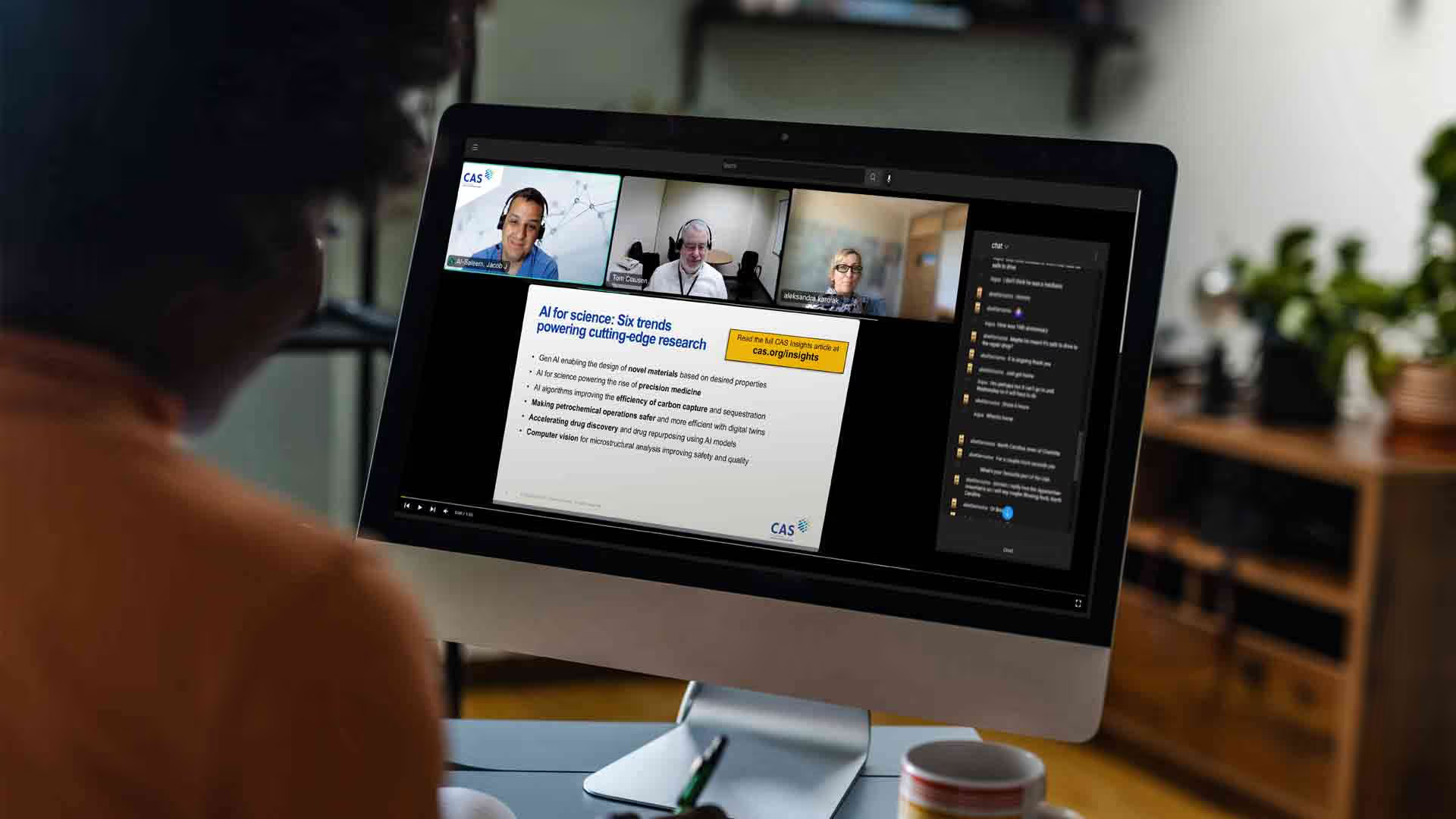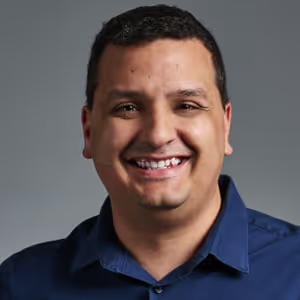Across every discipline, scientists today are facing the combined pressures of delivering results faster while navigating complex problems. While artificial intelligence (AI) is often seen as a kind of “magic wand,” our recent webinar panelists pointed out that AI is a powerful tool—but one where success relies on human instinct, ingenuity, creativity, and oversight to drive meaningful scientific progress.
In the webinar, AI for Science: Real-World Applications of Cutting-Edge Research Powered by Artificial Intelligence, Dr. Jacob Al-Saleem (Data Science Manager for Life Sciences at CAS), Dr. Thomas Clausen, (Senior Laboratory Director at 3M), and Dr. Aleksandra Karolak (Assistant Member at Moffitt Cancer Center and Assistant Professor at the University of South Florida), discussed how AI can accelerate scientific research, uncover patterns, and optimize processes within a framework that maximizes human talents and connections.
Exploring AI’s impact across disciplines
Dr. Clausen, with decades of experience at 3M, emphasized how AI is being used to accelerate product development, production, and commercialization, particularly in materials science. He pointed out that his team does not use large language models (LLMs), but focuses on other AI models for simulation, mechanical testing, and digital twin technologies—domain-specific tools that solve real-world engineering problems and speed up known processes.
Dr. Karolak, whose background spans chemistry, biophysics, and oncology, described how her lab uses AI to help understand treatment resistance and heterogeneity in cancer patients. Her work integrates multimodal data—genomic, proteomic, and transcriptomic information—to identify therapeutic targets and simulate molecular interactions.
The panelists agreed that AI is not a replacement for human expertise but a powerful tool to enhance it. With that in mind, the panel began a fascinating discussion of the role of AI in scientific research, focusing on results and the importance of the human factor.
Key takeaways from the session
After introducing their own work, our panelists used the recent CAS Insights article, “AI for science: Six trends powering cutting-edge research,” as the background for their discussion. Below are some of the discussed topics.
- Successful AI is often domain-specific. Rather than applying generic models, our panelists emphasized the importance of tailoring AI tools to specific scientific challenges. Dr. Clausen revealed that optimizing adhesives at 3M requires different modeling solutions from simulating protein-DNA interactions in oncology.
- Digital twins can be used in research and operations. Dr. Clausen highlighted how digital twins—virtual models of physical systems—are used in R&D and operational settings. From simulating product performance to supporting manufacturing decisions, digital twins are a key example of AI’s utility and versatility.
- Bias and data quality remain critical concerns. Dr. Karolak pointed out that while hallucinations in AI models are often discussed, training data bias is a more serious risk, especially in life sciences. Ensuring diverse, representative datasets is essential to avoid misleading conclusions.
- Interdisciplinary teams are essential. Our speakers stressed the value of cross-functional collaboration. At 3M, teams include chemists, engineers, neuroscientists, and even English majors. In academia, Dr. Karolak works closely with clinicians, biologists, and computer scientists to provide better patient outcomes. The speakers agreed that diversity of thought is important when working with AI, as it brings creativity and oversight that can be key to successful implementation.
Looking ahead: AI as a catalyst
Throughout the conversation, a recurring theme emerged: AI is a catalyst for innovation, not a substitute for human creativity. As Dr. Clausen noted, “AI allows you to quickly pick through the morass of information out there—and that can spark creativity.” However, he also emphasized that AI lacks the non-intuitive, serendipitous thinking that often drives innovation. He reiterated that 3M’s invention of the Post-it Note emerged from a chance encounter between two colleagues who saw potential in a failed adhesive.
Dr. Karolak echoed this sentiment, describing AI as a “catalyst” that helps researchers explore new hypotheses and rule out dead ends more efficiently. She also pointed out that while AI can support creativity, it falls short of generating truly novel hypotheses—something the human brain, with its intuition and experience, is uniquely suited to do.
The panelists expressed optimism about the future, while also urging caution and responsibility in how AI is applied. As Dr. Karolak shared, “Everything is a poison—it just depends on the dose.” The same holds true for AI: its impact depends on how thoughtfully it’s used.
Watch the full webinar
To explore more insights from our panelists, watch the full webinar here. You’ll gain a deeper understanding of how AI is shaping the future of science and how researchers navigate the opportunities and challenges it presents.







